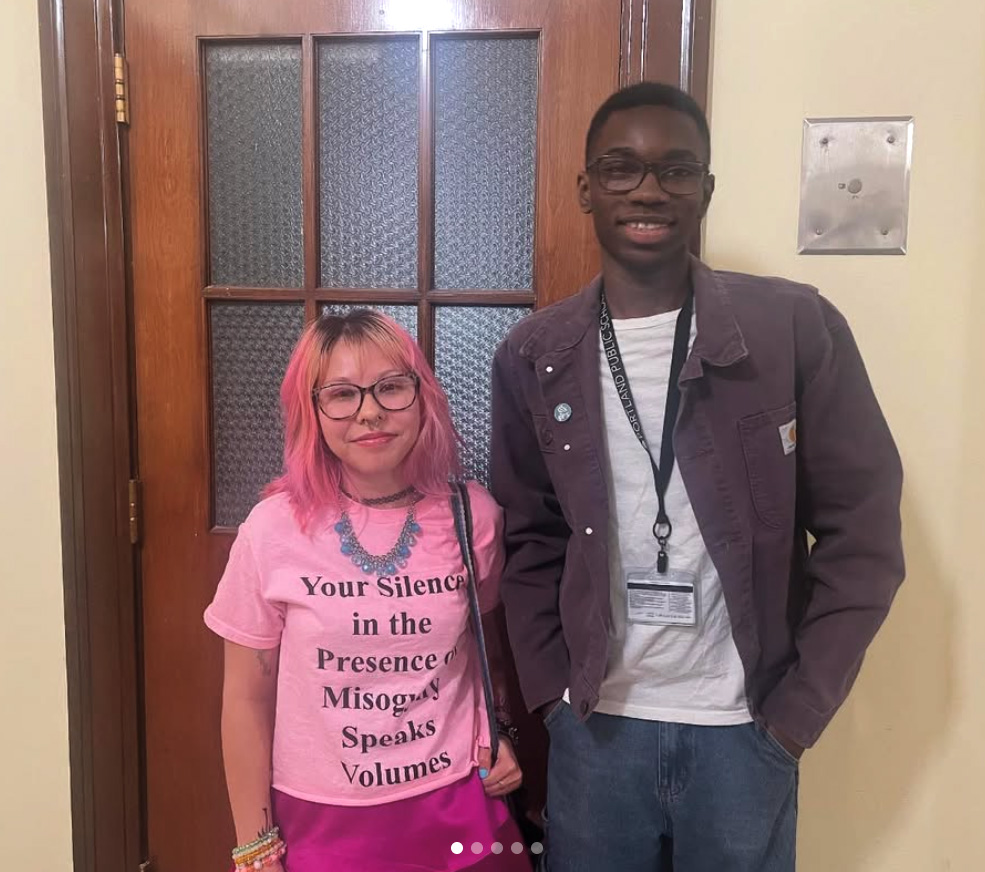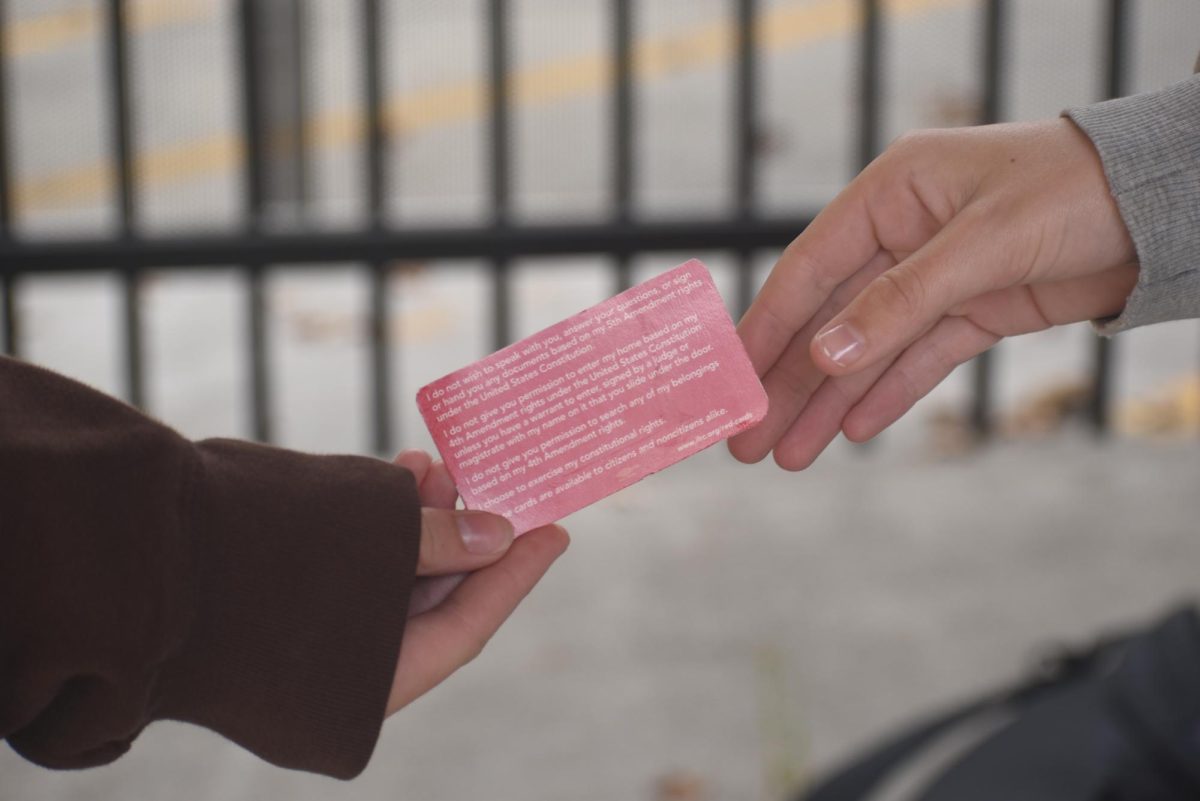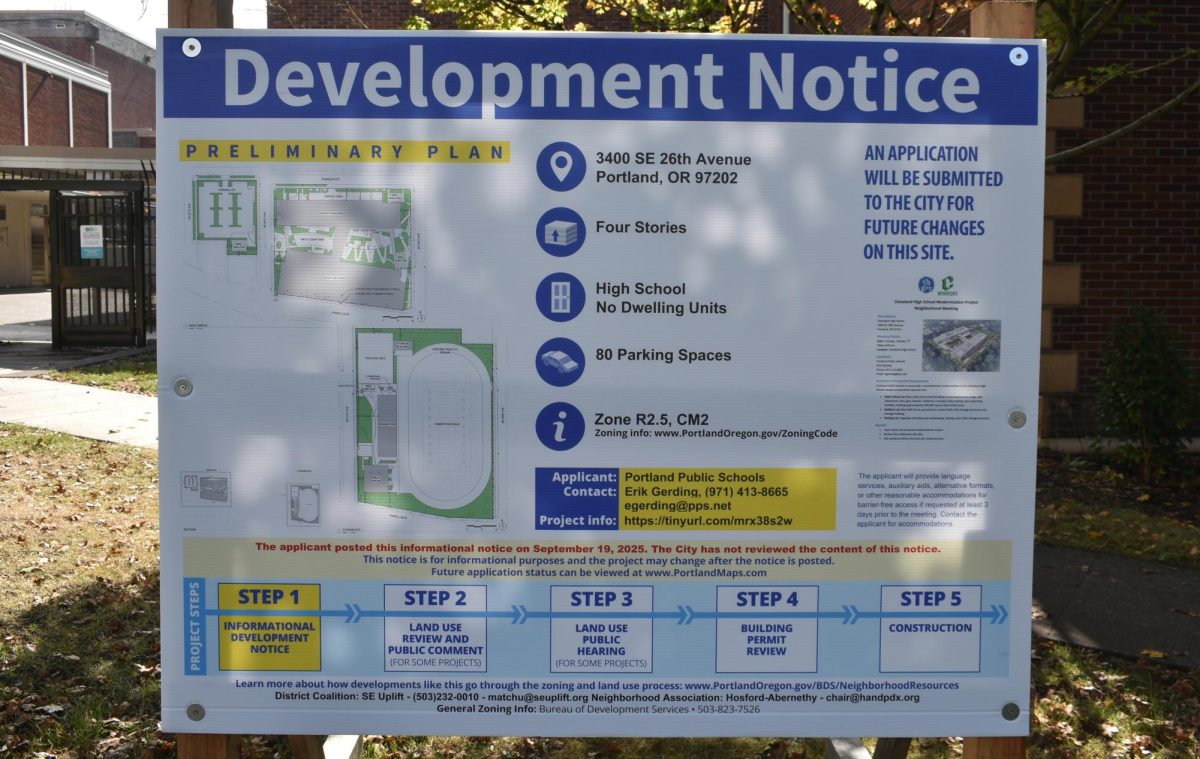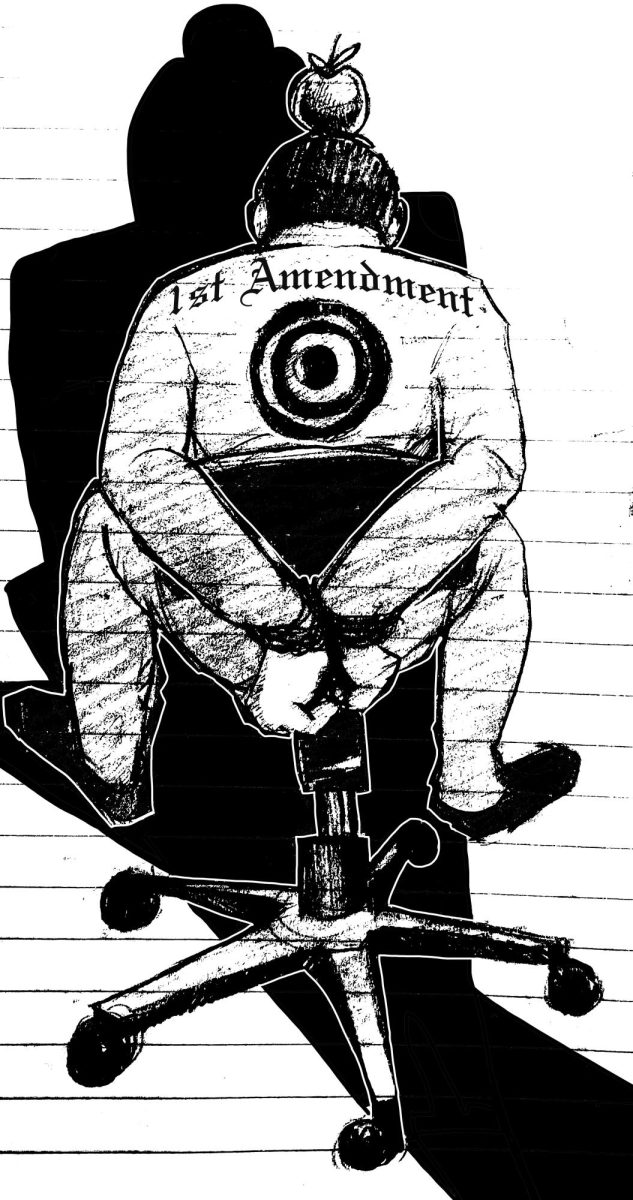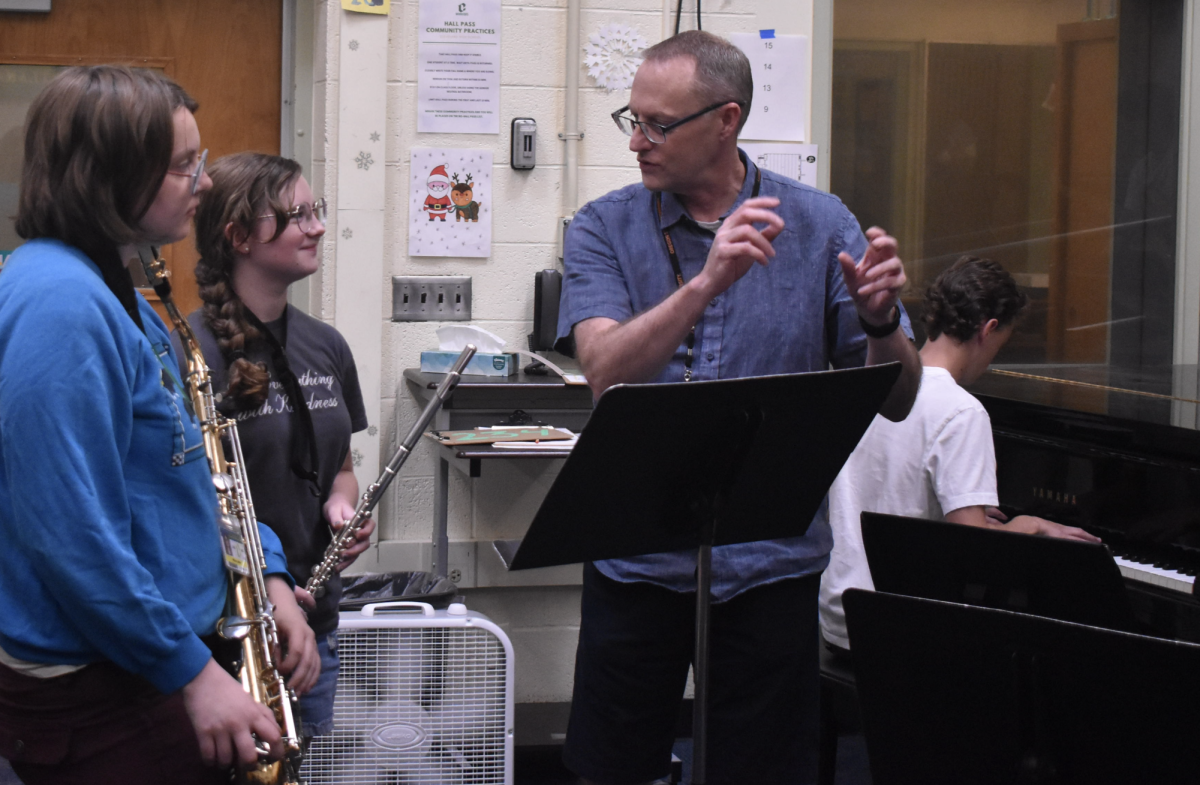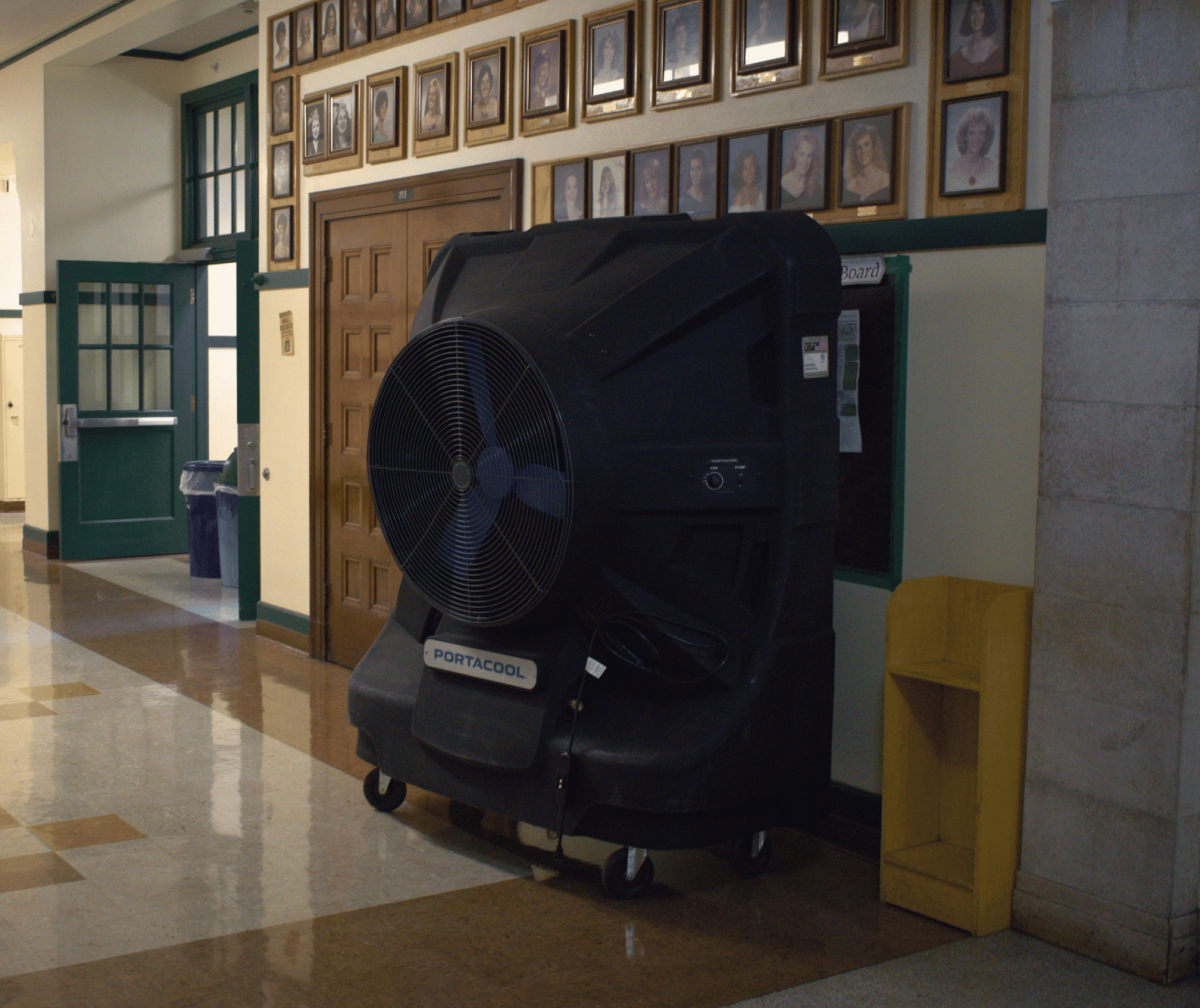“SILENCING US WILL DO NOTHING BUT HARM” is one of many messages Cleveland students put on posters around the school in protest of staff tearing down senior Phia Ruiz’s anti-misogyny posters.
Ruiz, a member of both the Building Consent Culture (BCC) and Cleveland Alliance for Racial Equity (CARE) classes, put up posters throughout the school on April 16 with messages designed to confront misogynistic culture.
“Mr. Ereckson came to me telling me about this project that CARE did three years ago for Black History Month. They put up all these posters without the admin’s approval, basically sending similar messages for a different topic. So he encouraged me to carry out something on my own,” Ruiz said.
The posters covered the walls of Cleveland and were intended to “make it look like the frustrations of the girls at Cleveland had exploded all over the walls,” Ruiz said.
On April 17, security guard Mat Alvarado was seen tearing down Ruiz’s posters.
Later, it was revealed that school administrators ordered the posters to be taken down, despite the fact that “Mr. Ereckson already talked to Amy (a security guard), letting her know about this project,” Ruiz said.
According to Ruiz, Amy Papasadero, the security guard, said she had received orders from principal Jo Ann Wadkins and vice principal Danielle Cota to take them down. The posters were “contributing to a climate of hostility towards men at school,” Ruiz was told.
The next day, administrators changed their explanation and told Ruiz that the posters were removed because they “went against policy” and had not been approved by administration beforehand or put in designated areas where posters are allowed.
After posters were removed by school officials, dozens of new posters written by frustrated Cleveland students appeared around the school.
The story was covered by The Oregonian, and suddenly the conflict de-escalated.
In the story, Principal Wadkins saw that the poster project was a jumping off point for what she said was the necessary but “difficult work of undoing historical patterns.”
Progress towards this work began on Monday, May 5 when a survey titled “Anti-Misogyny Movement Feedback” was sent out to all English classes. The survey asked questions related to student safety and concerns about misogyny. The administration took in the data and redacted any personal information and then planned to share it with CARE and BCC for more analysis.
Further work occurred on May 8, when the BCC class and the Healthy Masculinity Club promoted and held an evening community meeting and workshop. The event addressed various topics such as the posters, the culture of misogyny at school, and how men at the school can contribute to a safer space for female students. It aimed to spark conversation and educate about the problems of misogyny.
The event was a big success, as many of the workshops were student-led, well presented and informative, attendees said.
Isaac Rudiger, a sophomore member of the Healthy Masculinity Club, gave a presentation about the “manosphere” and how social media influences young men. The manosphere is a collection of websites, blogs, and online forums promoting toxic masculinity, misogyny, and opposition to feminism.
“We talked to Ruiz about the posters a couple times, asking what our club can contribute to. We supported what they were doing. We definitely talked about the posters at the meeting. Also about how the administration handled it,” Rudiger said.
The event was promoted by Gaye Chapman, the BCC teacher, and Brian Fain, an advisor to the Healthy Masculinity Club, and they received support from the Raphael House as well.
“We hope to build on the momentum and continue to engage our community in thoughtful and impactful ways in the future, work we can continue doing in BCC Leadership class, with CARE Leadership, CHS Leadership and the Healthy Masculinity Club,” Chapman said.
The movement sparked by Ruiz and amplified by the voices of students is a sign that real conversations about misogyny are starting. It shows that when students speak up, even in the face of pushback, their message can create ripples. Change at Cleveland is not only possible, but already in motion.



